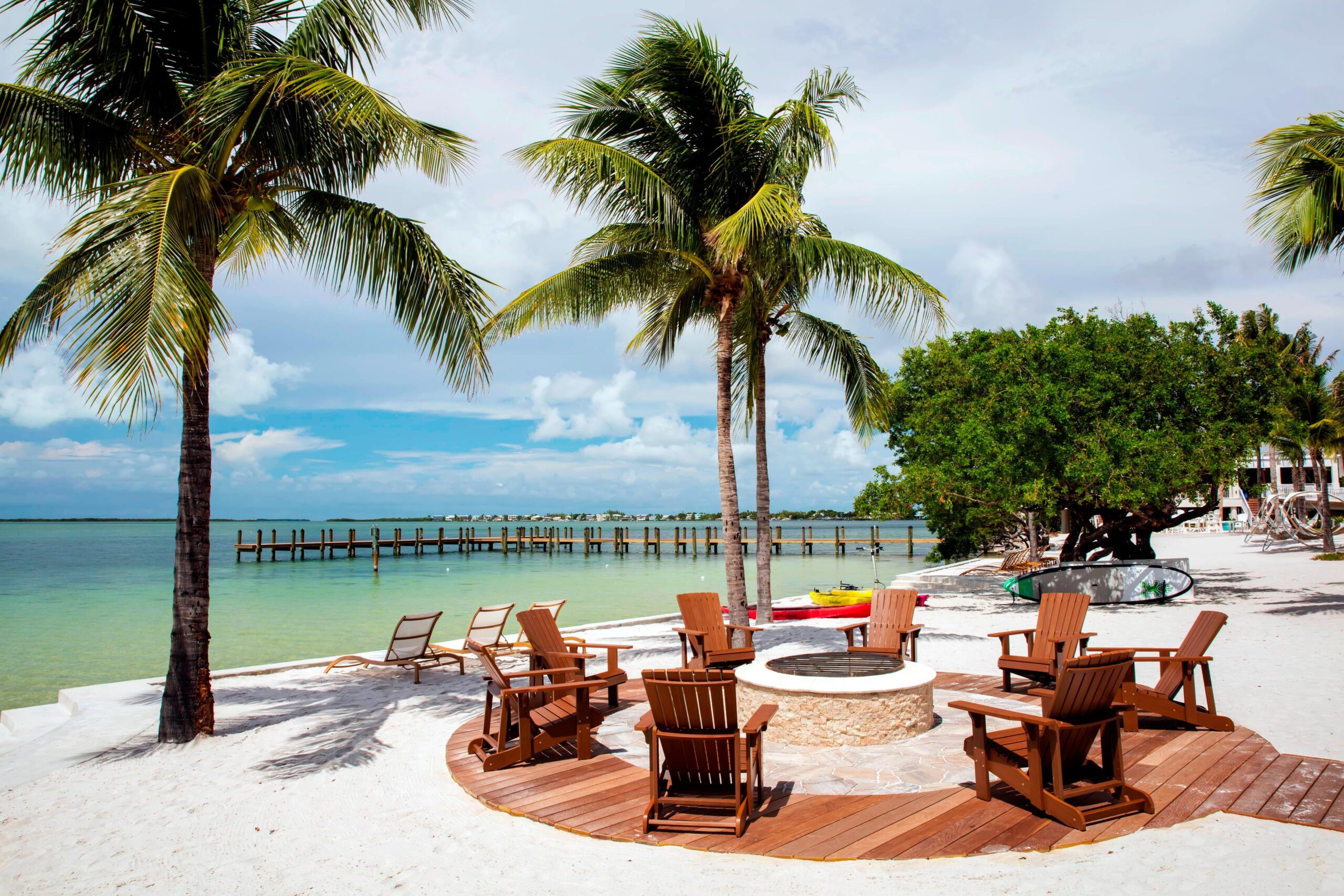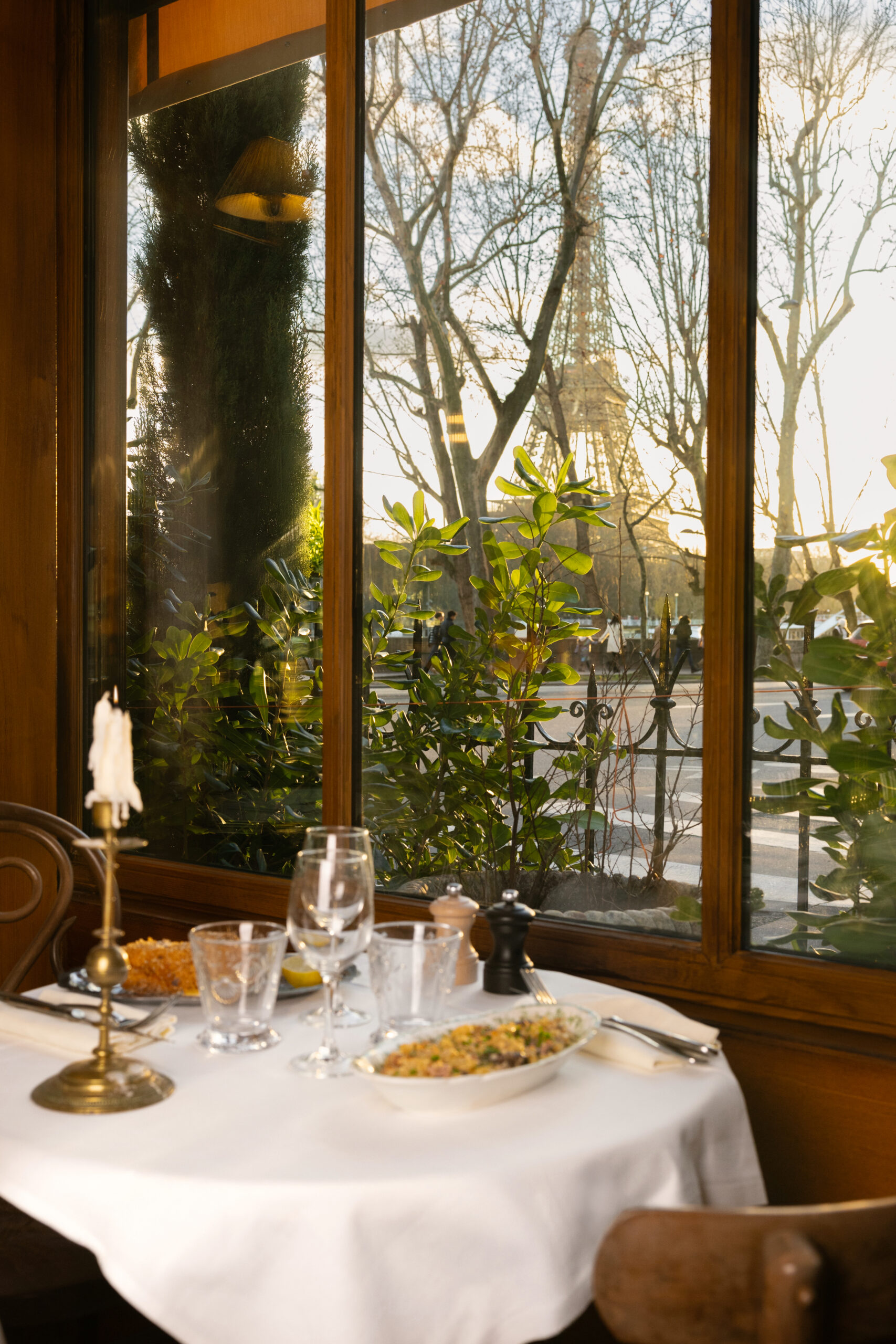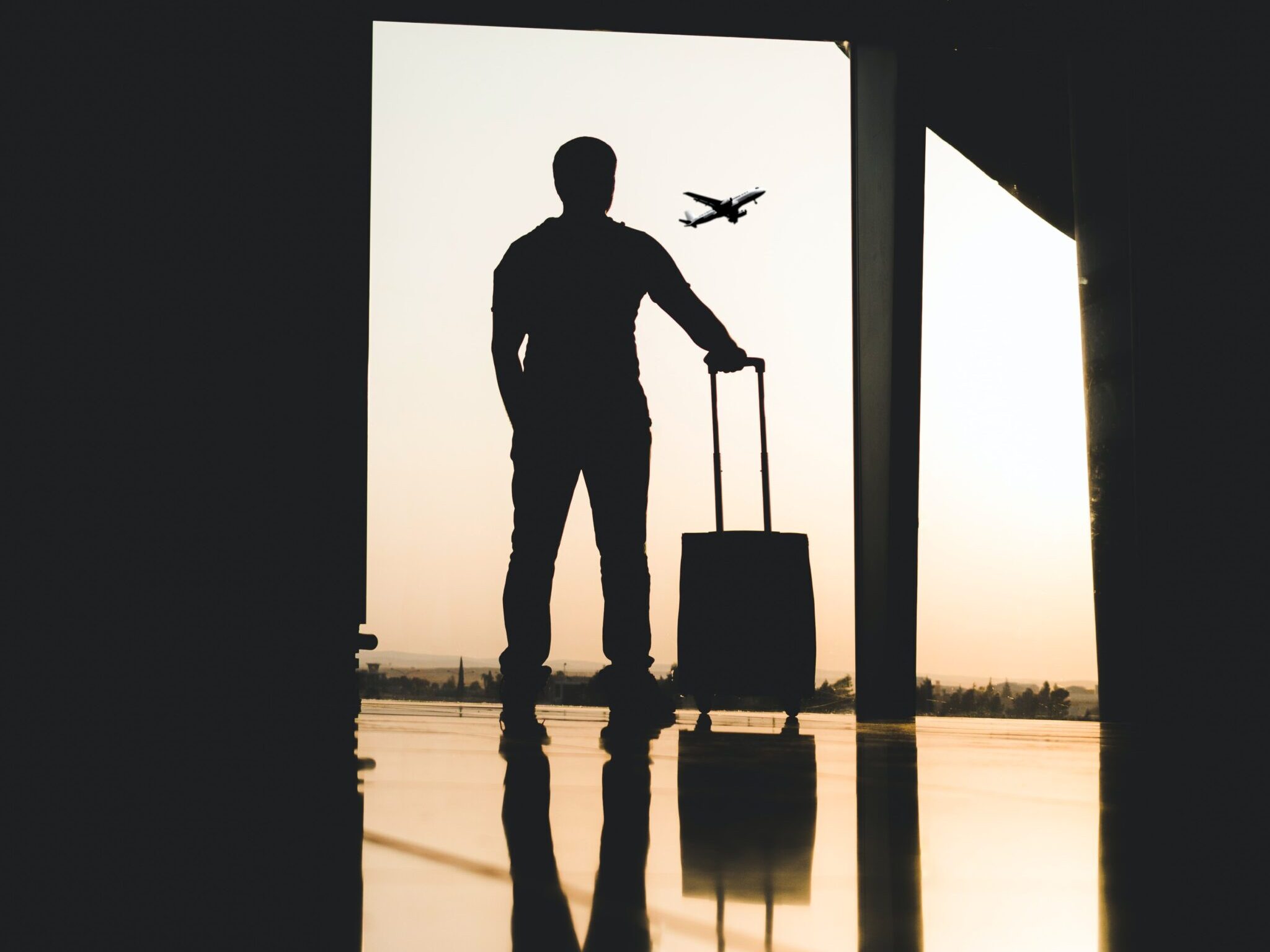Flight Level Champagne: The Art and Science of Sipping Bubbly on a Plane
A story about sourcing, tasting, selecting, and serving the finest champagne in the world's best First and Business Class cabins
August 8, 2024
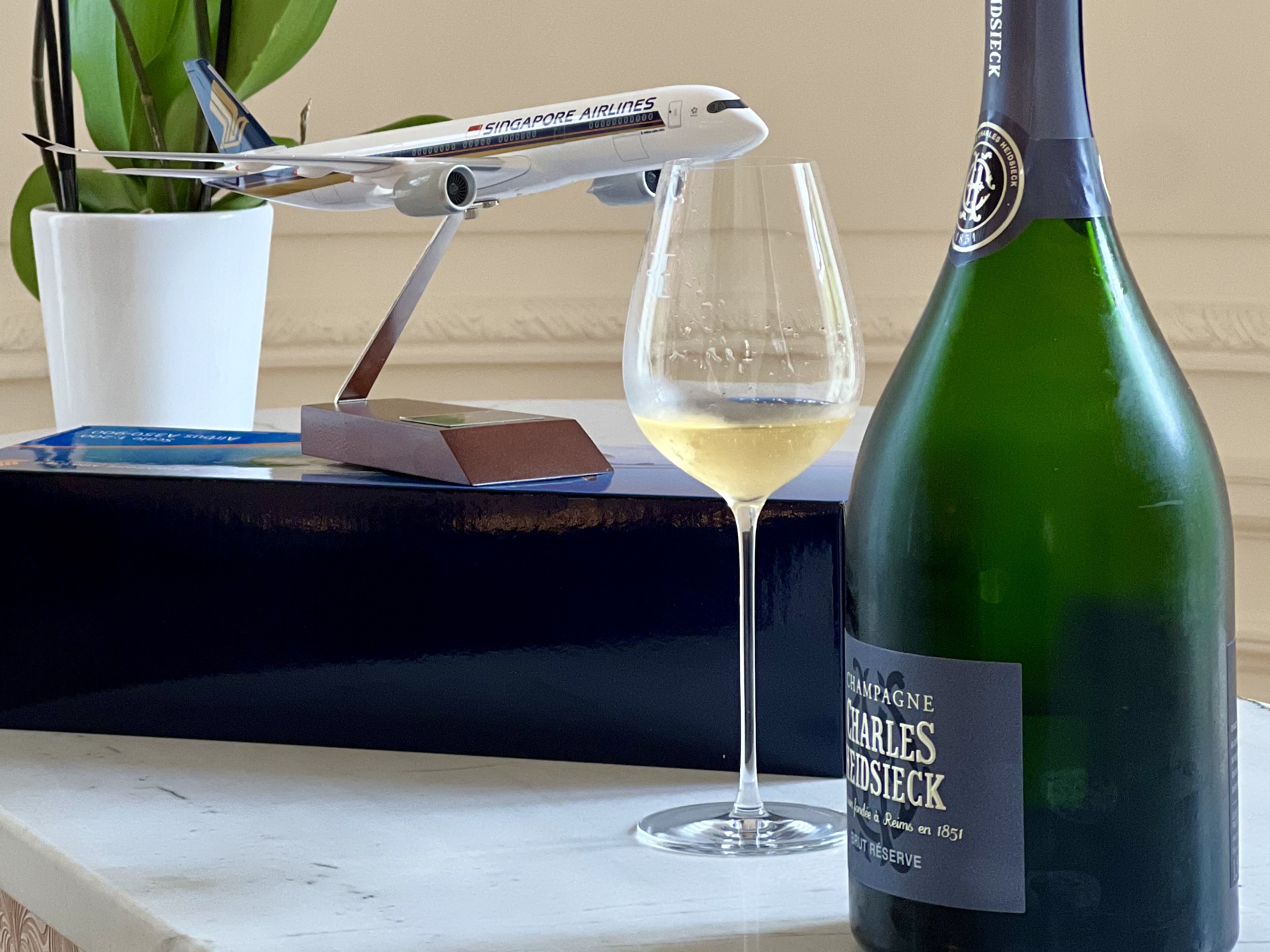
Photo: Charles Heidsieck, Singapore Airlines. Courtesy of Enrique Perrella
In the early days of commercial aviation, boarding a plane was a grand affair. Passengers donned their finest attire for journeys that spanned up to 20 hours, soaring through the skies in unpressurized cabins. Back then, there were no in-flight movies or Wi-Fi—just the allure of air travel itself, complemented by lavish dining experiences, spirited conversations, and the effervescent flow of champagne, lending an air of sophistication to every voyage.
Sparkling wine’s association with air travel took flight in 1954 when California-based Western Airlines introduced a groundbreaking concept. “Partnering with Italian Swiss Colony, Western began serving California sparkling wine onboard, enticing passengers away from competitors and setting a new standard in in-flight luxury,” says aviation historian David H. Stringer.
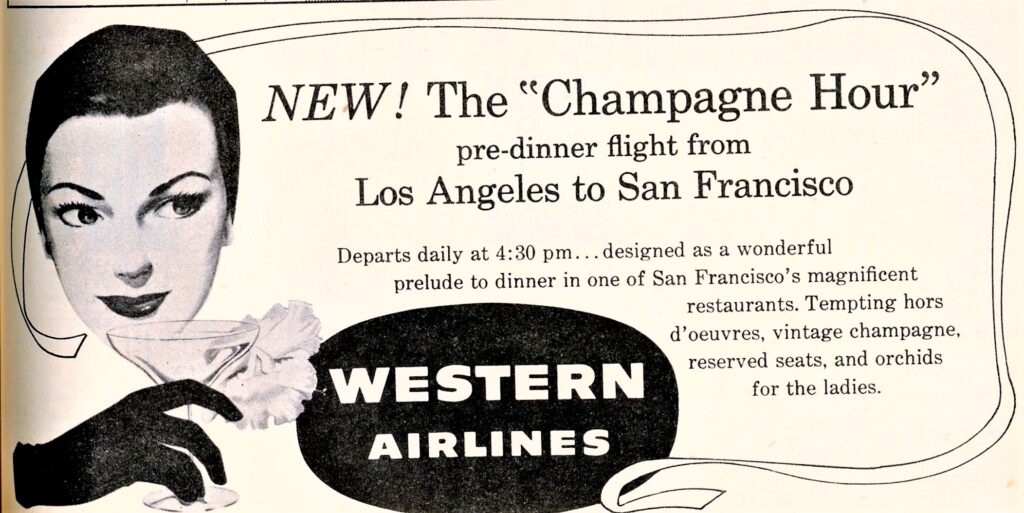
Photo: Courtesy of David H Stringer
“Dubbed Champagne Flights, these journeys promised more than just transportation—they offered tempting hors d’oeuvres, vintage bubbly, reserved seats, and even orchids for the ladies, all underscored by an era when air travel meant elegance and exclusivity.”
Today, the aviation landscape has evolved significantly, trading spacious in-flight bars and endless caviar blinis for cost-saving measures like removing an olive from each meal to save thousands of dollars. The industry’s shift toward no-frills carriers has redefined travel priorities, marking both the highs and lows of an industry perpetually in motion.
Amid this evolution, a select few airlines shine brightly, distinguished by their commitment to sourcing, presenting, and serving their passengers with the finest champagne worldwide—a touch of luxury that turns flights into unforgettable experiences.
Suite Birthday
Singapore-based Daniel Lim had his 35th birthday planned with style and bubbles. Alongside his partner, Evelyn, he secured two of the world’s most sought-after in-flight seats for 60,000 miles each on Singapore Airlines (SIA). “Having boarding passes for Suites 1A and 2A meant we were going to experience something truly extraordinary,” he says. An aviation enthusiast with a penchant for fine champagne, Lim anticipated a lavish journey filled with luxury and effervescence.
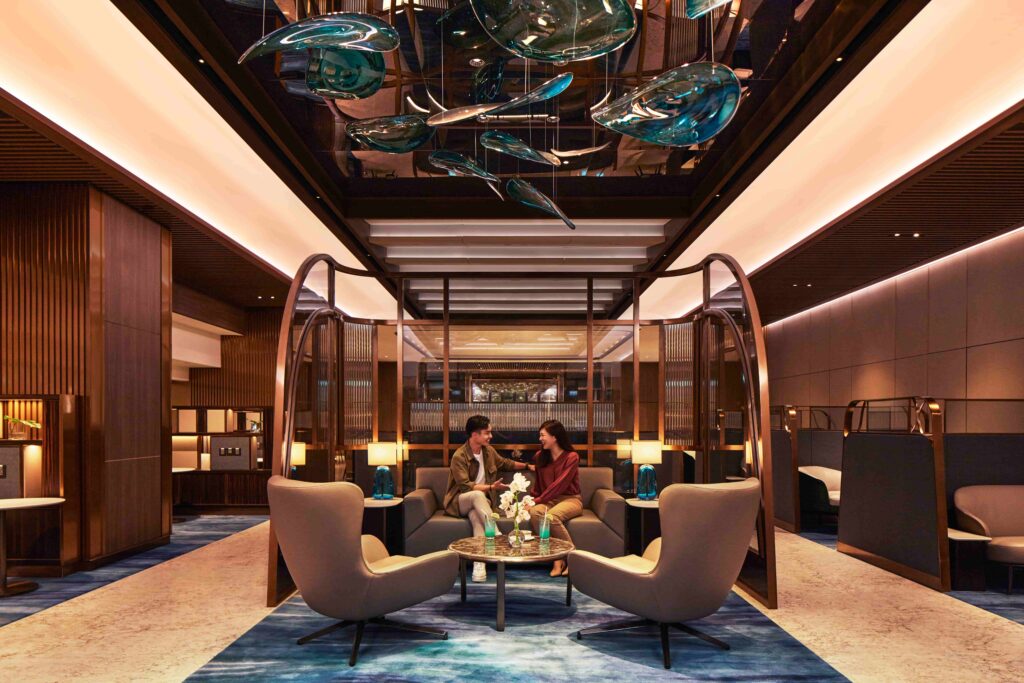
Photo: The Private Room. Courtesy of Singapore Airlines
Their celebration commenced at Singapore Changi’s The Private Room, where they indulged in Egly-Ouriet V.P. Grand Cru paired with delectable lobster laksa and Wagyu beef. This exquisite start set the stage for their eight-hour flight in the opulent 100-square-foot combined suites, complete with expansive TV screens, full-flat beds, and reclining Poltrona Frau leather seats.
Once airborne, the real indulgence commenced as the couple savored a continuous flow of premium champagnes such as Krug Grande Cuvée 167ème Édition, Taittinger Comtes De Champagne 2012 Blanc De Blanc Brut, and Charles Heidsieck Blanc des Millenaires Brut 2007.
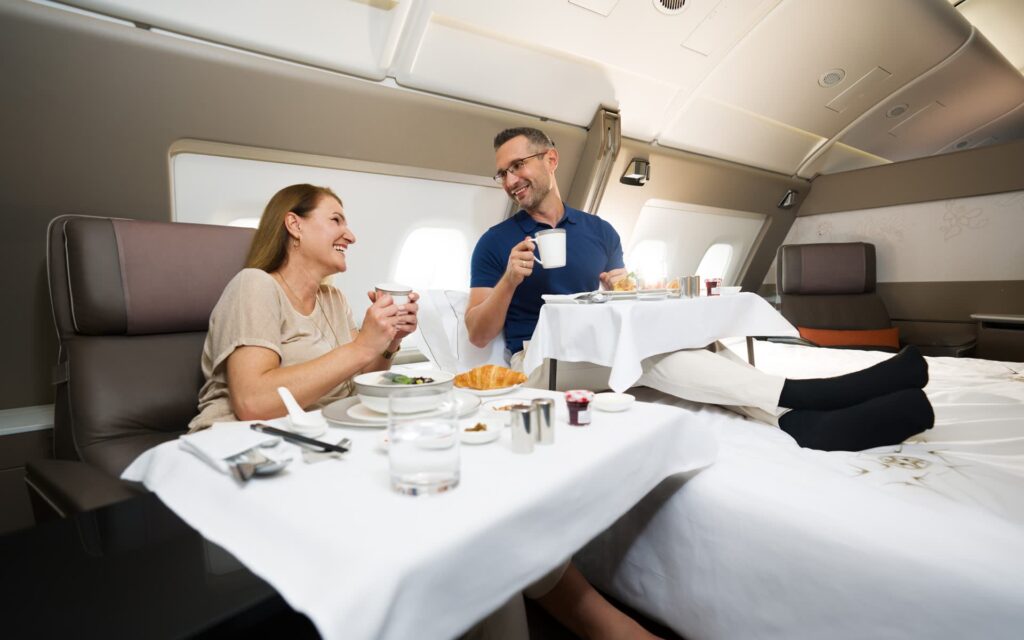
Photo: First Class Suite. Courtesy of Singapore Airlines
Each bottle was expertly served by the Air Sommelier, whose enchanting descriptions reflected the airline’s commitment to sourcing an exceptional array of champagne labels.
Champagne Etiquette
When it comes to first and business class travel, champagne has become a quintessential element. Gino Bertuccio, a renowned first-class flyer and regular on SIA, firmly believes in the importance of champagne in elevating the flying experience. “In business class, I don’t expect the champagne service to be top-notch,” he says. “But in first class, anything less than the best is unfathomable.”
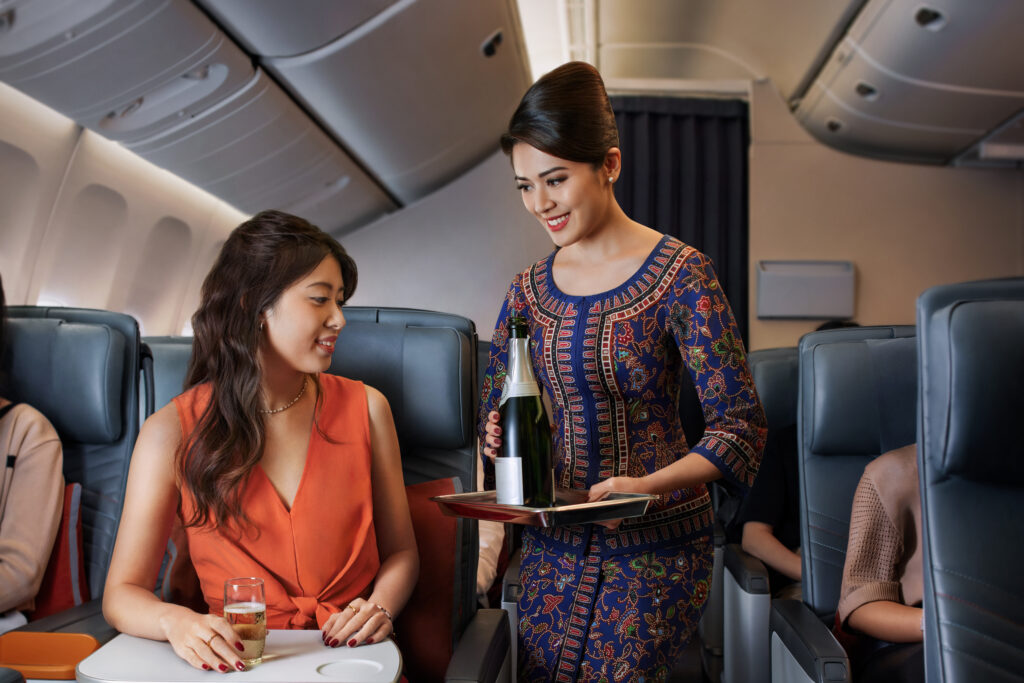
Photo: Champagne service in Premium Economy. Courtesy of Singapore Airlines
Bertuccio appreciates airlines like SIA for its meticulous approach to serving champagne. “The two most important aspects of serving champagne on an airplane are the proper glass and the right temperature,” he explains. This attention to detail ensures that the experience is as luxurious at 35,000 feet as it would be on the ground.
Dr. J. Todd Wheeler, an anesthesiologist based in Atlanta and frequent first-class traveler, shares a similar sentiment. “My pour of champagne marks the beginning of my journey and the time to relax,” he says. “In Air France’s La Première, the purser brings a silver tray with bespoke champagne flutes, placed on coasters bearing the airline’s logo. The bottle is presented during your first taste, followed by a gentle pour.”
However, the house ambassadors for Krug, challenge a common practice: serving champagne in flutes. They consider it almost a “champagne sin,” comparable to the faux pas of adding ice cubes to the glass—a practice known as “champagne piscine”—or worse, serving it in a plastic cup, a sight still common on some carriers.
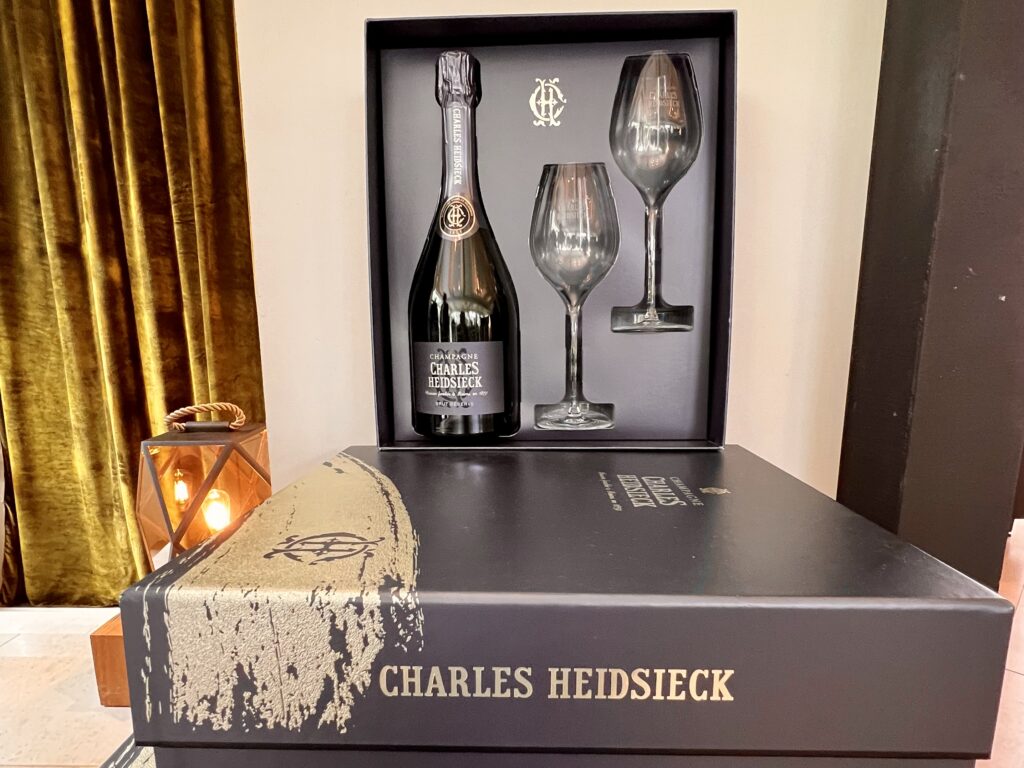
Photo: Charles Heidsieck champagne kit. Courtesy of Enrique Perrella
“Flutes are not suitable as they don’t allow the drinker to fully experience the bouquet of aromas and complexity of the champagne,” they explain to Business Traveler in Reims, France. They emphasize that champagne should be “presented, explained, and enjoyed in a way that pays tribute to the craftsmanship and history behind each bottle.”
The Science Behind the Bubbles
For most passengers, the intricacies of serving champagne onboard might seem daunting. Yet when airlines master this balance, it transforms the in-flight experience. The fusion of champagne etiquette and scientific insight ensures that each glass poured aloft celebrates the heritage and craftsmanship of this golden liquid.
Understanding the nuances of in-flight tasting is pivotal to appreciating champagne served in the sky. The dry cabin air and high altitude significantly alter our taste perception, demanding careful consideration in how champagne is presented to preserve its integrity. Experts such as the house ambassadors at Krug stress that proper presentation and explanation can elevate a simple glass of champagne into the highlight of any flight.
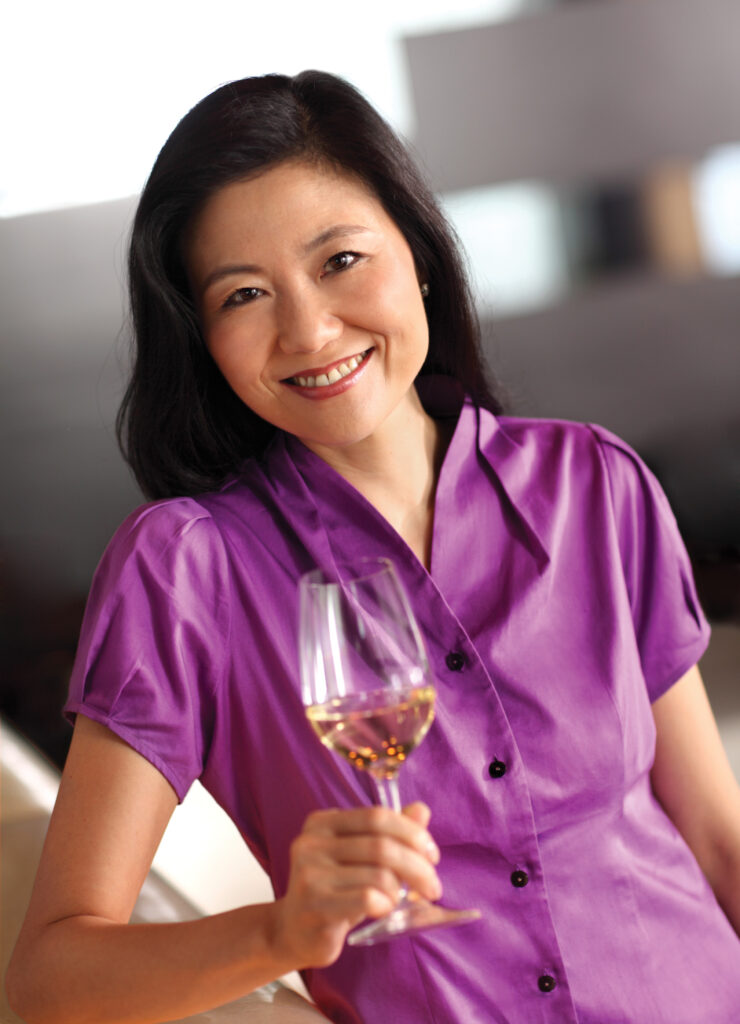
Photo: SIA Wine Expert Jeannie Cho Lee. Courtesy of Singapore Airlines
For this, SIA relies on its esteemed team of Wine Experts to curate an exceptional beverage lineup. Led by pioneers like Jeannie Cho Lee, Oz Clarke, and Michael Hill Smith, these experts meticulously select the 2.1 million bottles of wine and champagne that the airline serves annually. Their discerning palate and rigorous blind tastings have earned the airline accolades, including recognition for the best Cellar in the Sky.
Within SIA’s dedicated wine-tasting room, the experts meticulously evaluate wines to ensure they shine at altitude. Their selection process involves rigorous analysis, considering the varying cabin environments across the airline’s fleet—from older Boeing 777-300ERs to brand-new Airbus A350-900s. Each aircraft’s unique cabin altitude impacts passenger comfort and taste perception, prompting airlines such as SIA to conduct extensive tests to understand these effects.
In a landmark study by Lufthansa and the Fraunhofer Institute for Building Physics, scientists revealed how altitude diminishes sensitivity to sweet and salty flavors by 30 percent due to reduced air pressure and low humidity. This underscores the challenge of maintaining flavor integrity in-flight, where up to 80 percent of taste perception is influenced by smell.
Clarke, with his extensive flight experience, confirms these findings. “The human body tends to dehydrate when flying,” he says while sipping a 1983 Charles Heidsieck Millésimé Rosé at the label’s house in Reims, France.
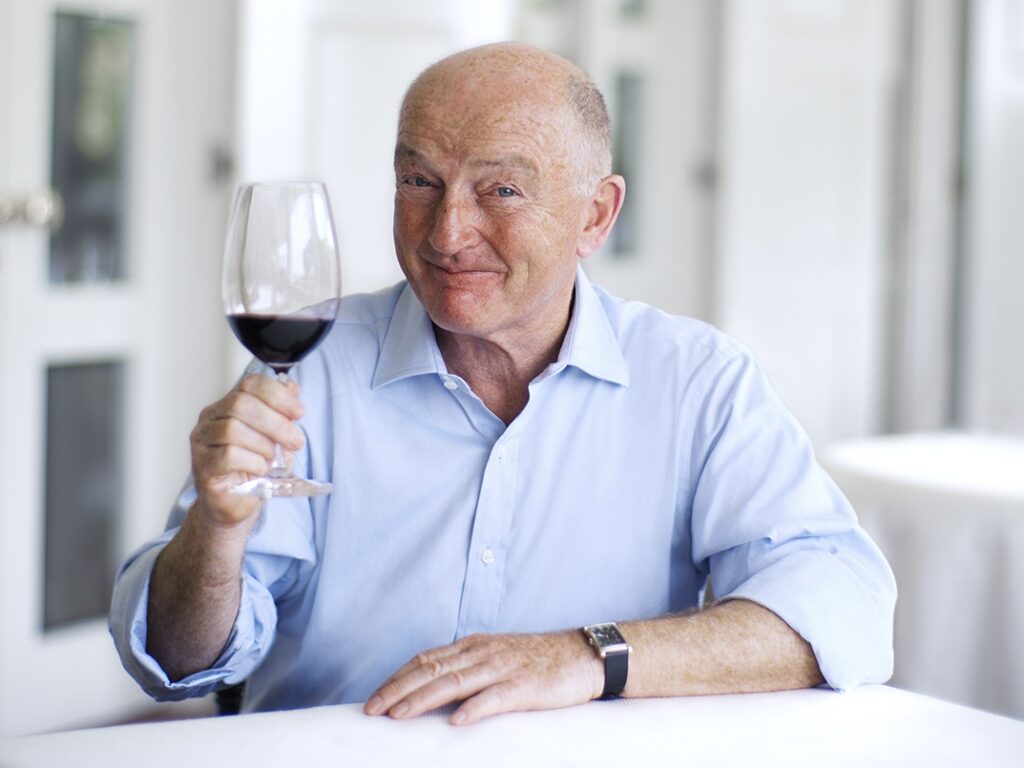
Photo: SIA Wine Expert, Oz Clarke. Courtesy of Singapore Airlines
His colleague Lee further emphasizes the need for wines that retain their fruity and low-acidity profiles in dryers and higher cabins. “For this reason, we tend to select wines that are naturally fruity, low in acidity, and low in tannins,” she says. “But champagnes are naturally acidic, so we must consider how every champagne will behave at altitude.”
Supply and Demand
After extensive visits to their preferred champagne houses, the Wine Experts at SIA face the crucial task of negotiating new offerings. This process involves securing enough bottles to meet the demands of the airline’s extensive network, spanning 76 destinations in 32 countries.
“Champagne consumption is increasing, but the supply remains constant,” says Émilien Boutillat, cellar master of Piper-Heidsieck champagne, during a tour of the house’s vineyards in central France. “The work we do today in our vineyards may not reach customers for another 10 to 15 years. It’s a job that demands patience, passion, and respect for tradition.”
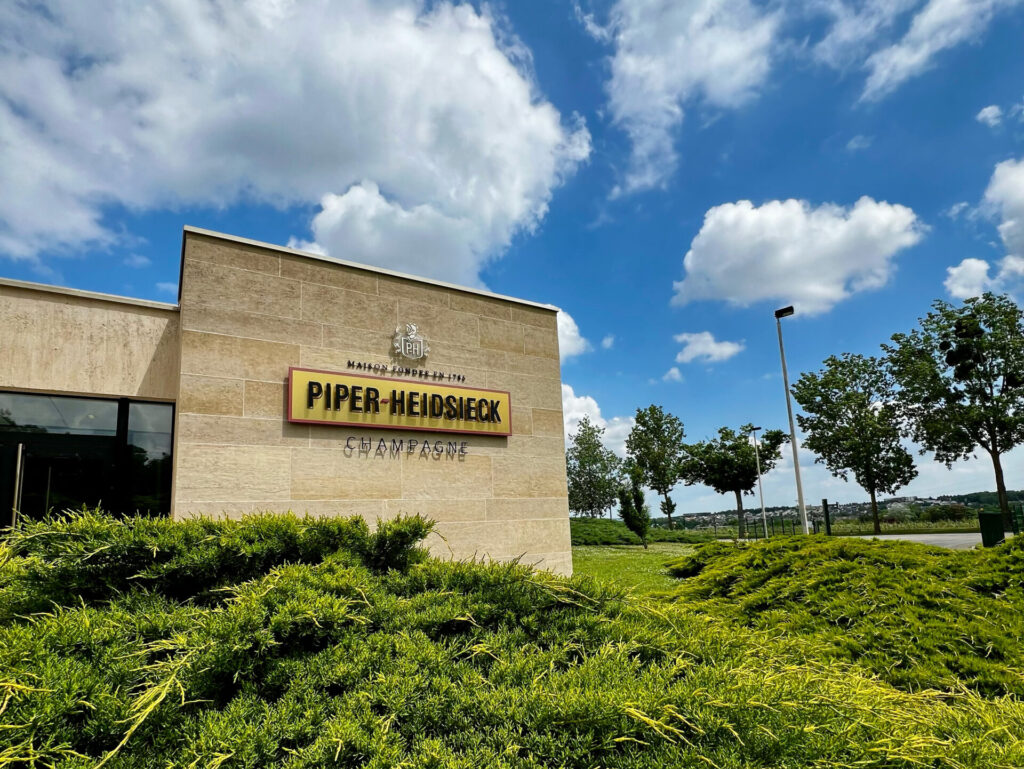
Photo: Piper-Heidsieck. Courtesy of Enrique Perrella
Antony McNeil, SIA’s global director for in-flight service and customer experience, emphasizes the challenges posed by supply and demand. “We must also consider that other airlines, restaurants, and hotels purchase more bottles than we do,” he tells Business Traveler.
Once the selection and logistics are finalized, McNeil highlights the airline’s commitment to training more than 120 Air Sommeliers. These professionals play a vital role in ensuring that every passenger enjoys a premium experience that matches the caliber of the selected products and SIA’s renowned in-flight catering service.
How to Drink Champagne Onboard?
Singapore Airlines spares no effort in ensuring that champagne onboard is enjoyed to its fullest. In First Class, passengers can indulge in a selection that includes two prestigious cuvées, a rare grower champagne, and a meticulously curated array of wines. Even in Premium Economy, there’s a touch of luxury with a glass of fizz for every passenger.
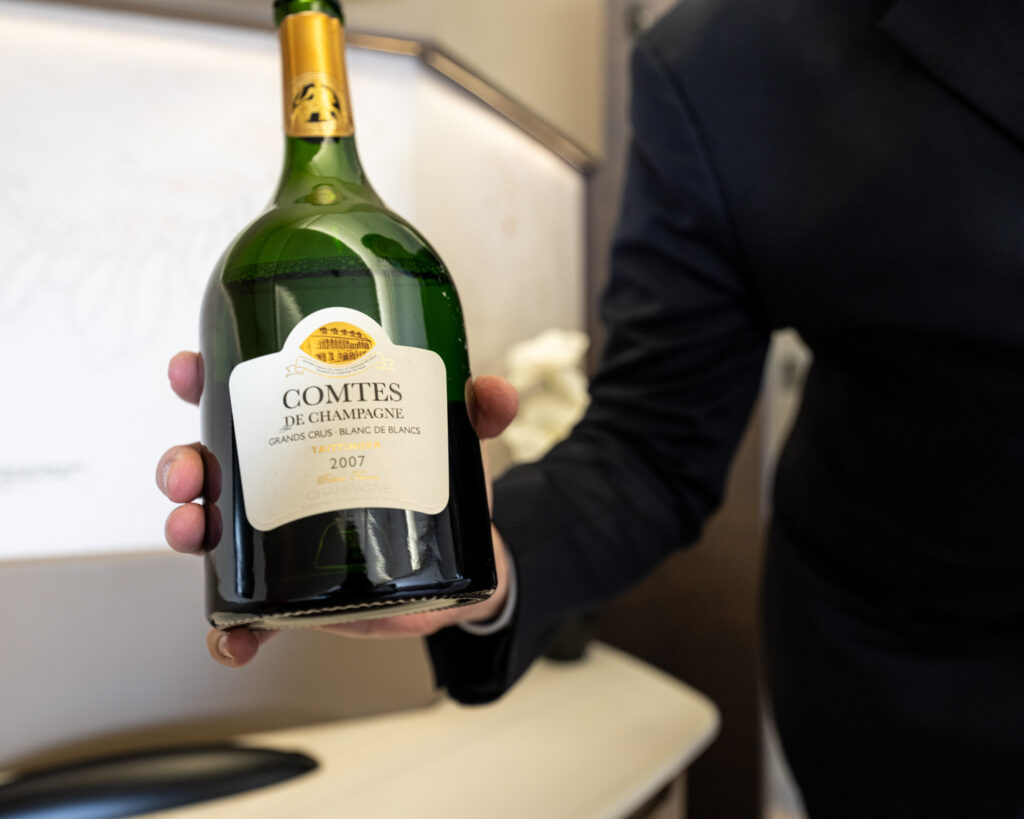
Photo: Singapore Airlines, First Class champagne service. Courtesy of Andy Luten
For Matt Nevans, a frequent first-class traveler to Asia, the choice of glassware is pivotal in appreciating fine champagne. He often asks cabin crew to provide a regular white wine glass over the traditional flute, ensuring he fully enjoys the complexities of the airline’s exclusive champagnes.
In addition to the proper container, Lee stresses the importance of serving champagne at the correct temperature—between 46 to 50 degrees Fahrenheit—“to fully experience its flavor profile,” she says. “I recommend cupping the glass with both hands, letting it warm up for a little while. You don’t want it too cold because it mutes all the flavors, complexity, and depth. After five minutes, it reaches the perfect temperature.”
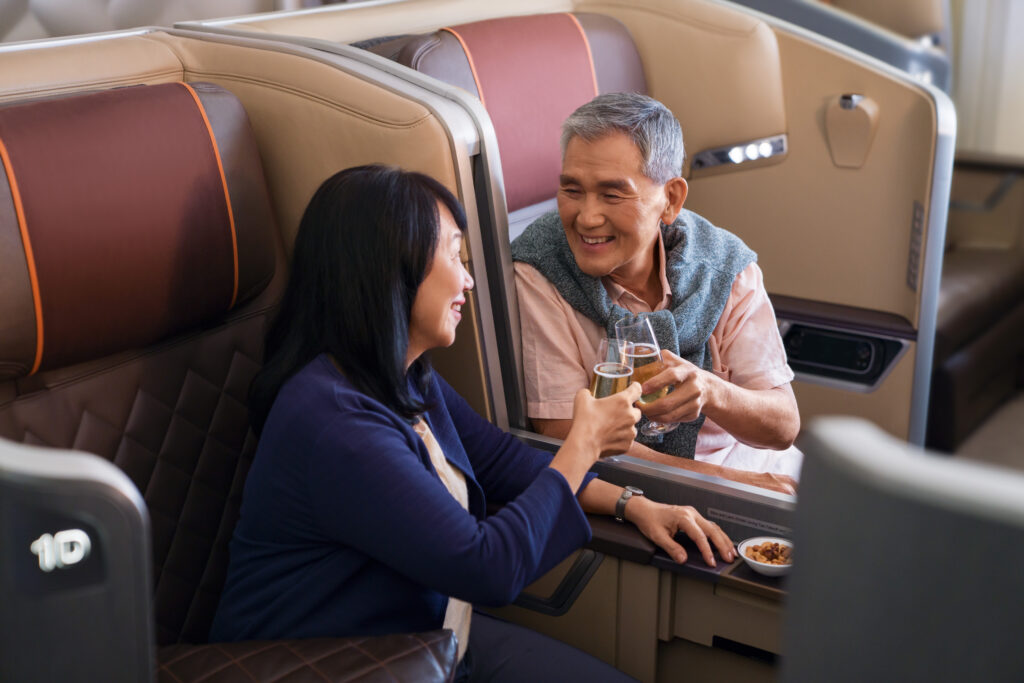
Photo: Courtesy of Singapore Airlines
Reflecting on a recent flight from New York to Singapore aboard SIA’s A350-900ULR, James Larounis, a Washington, D.C.-based health-care professional, describes a glass of Piper-Heidsieck Cuvée Brut waiting as he settled into his seat. Despite not being a champagne enthusiast, he says, “the gesture set the stage for an exceptional journey.”
Honoring the Craftsmanship
Behind every bottle of champagne served onboard lies a story of dedication and craftsmanship—from the vineyards of Champagne to the knowledge of SIA’s Wine Experts and the meticulous care of its Air Sommeliers.
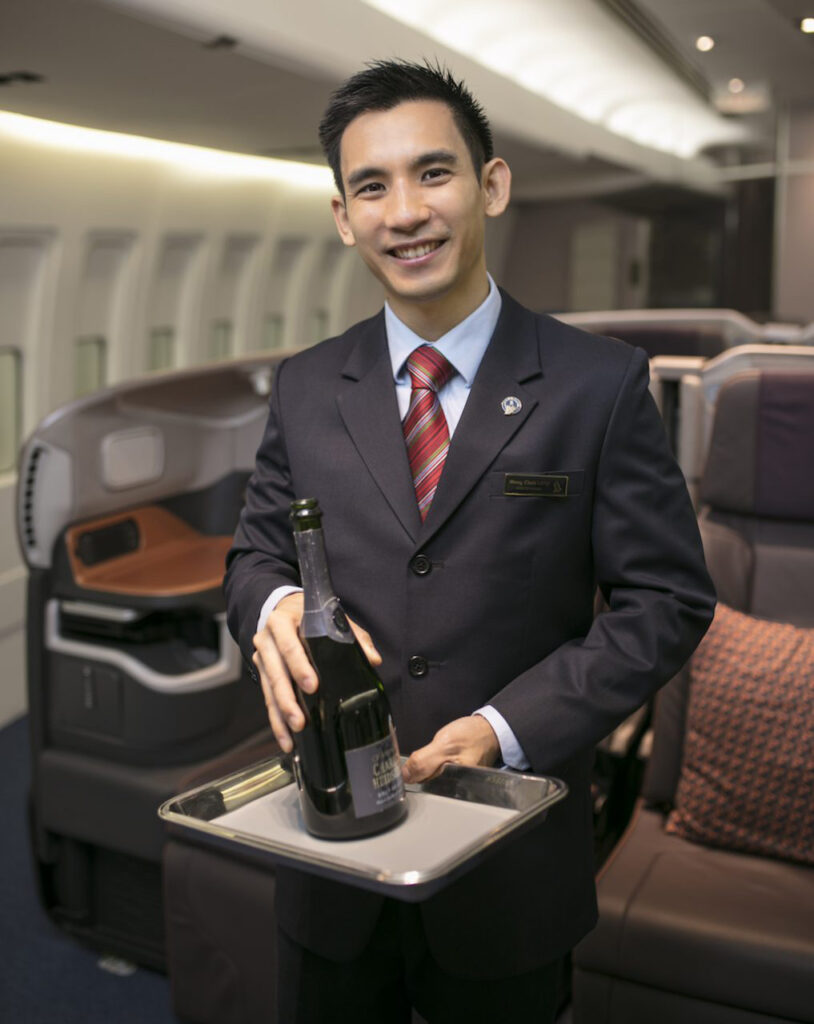
Photo: Air Sommelier. Courtesy of Singapore Airlines
As you sip champagne while soaring through the skies at 600 miles per hour, take a moment to appreciate the tremendous effort that goes into each glass. Dom Pérignon’s famous words, “Come quickly, I am tasting the stars,” reminds us that onboard an airplane, you’re closer to the stars than anywhere else.

